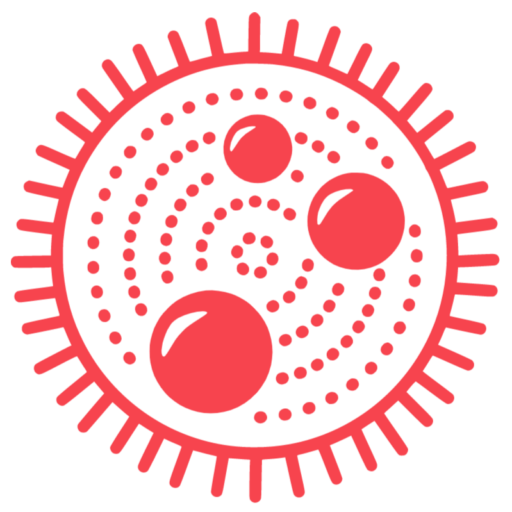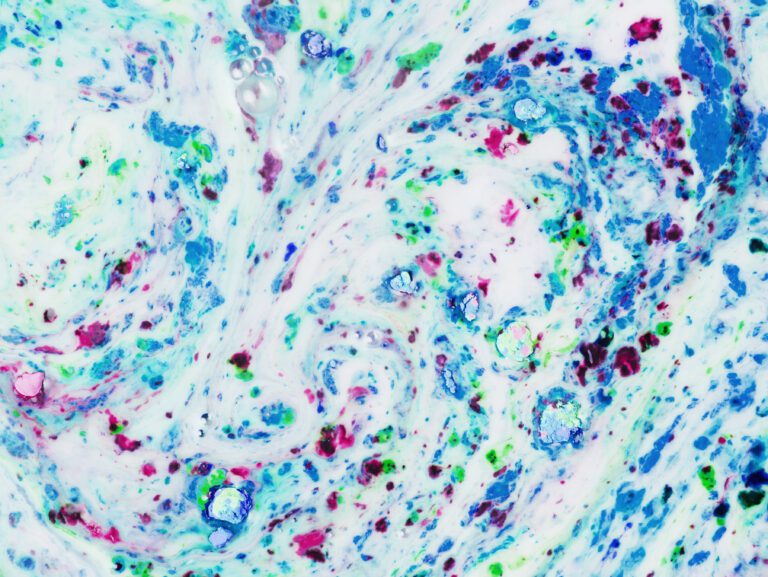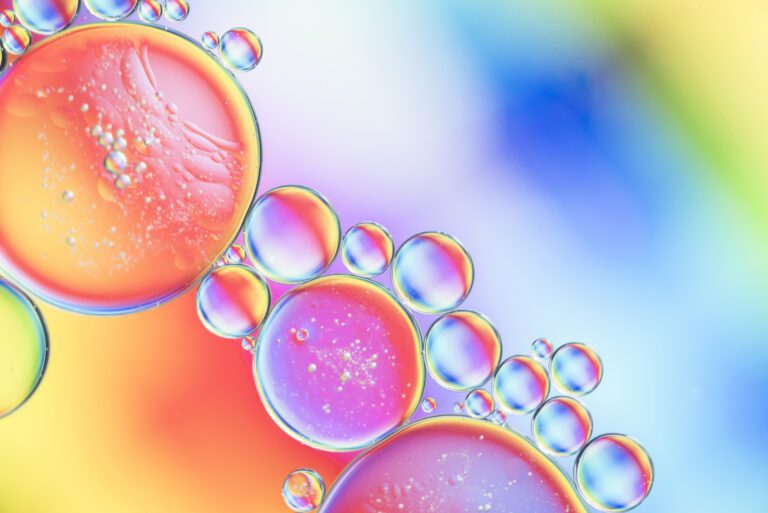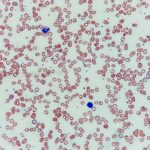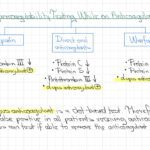
Less common hemoglobinopathies that are relevant in clinical practice include hemoglobin D, E, O, and H. Other rare hemoglobin variants can also be found but are less likely to be clinically relevant. Importantly, most hemoglobinopathies are related to beta-globin instead of alpha globin, likely due to having 4 copies of alpha (versus 2 copies of beta) and the better tolerance to genetic changes of alpha-globin. Although the initial test for the investigation of hemoglobinopathies is the hemoglobin electrophoresis, it is crucial to recognize that several hemoglobin types could be seen in the same position of the electrophoresis gel. For example, hemoglobin C and hemoglobin E/O can be seen in the same position as noted in the image below. Therefore, genetic testing is relevant in those scenarios to distinguish the type of hemoglobin disorder found.

Hemoglobin D
- Hemoglobin D occurs due to a point mutation in the beta-globin gene at codon 121, where glutamine replaces glutamic acid (GAA → CAA) in the protein structure.
- Autosomal recessive inheritance.
- It can be found worldwide but is most common in India and Pakistan.
- It causes minimal consequences when present alone but co-inheritance with other hemoglobinopathies could become clinically relevant.
- Examples of compound states can include hemoglobin D/beta-thalassemia or hemoglobin D/Hemoglobin S which could lead to hemolytic anemia or sickle cell disease.
- Suspect hemoglobin D if patients have unexplained anemia which is usually mild and with minimal clinical consequences when not associated with other hemoglobin disorders.
- Testing includes hemoglobin electrophoresis, which shows an abnormal band similar to HbS (which can be differentiated if acid electrophoresis is used), and a confirmatory test with genetic assessment, which shows the characteristic codon 121 point mutation.
Hemoglobin E
- Hemoglobin E is commonly found in Asia but can be seen worldwide. It is most common in Cambodia, Laos, and Thailand.
- It results from a point mutation in the beta-globin gene at codon 26 causing a substitution of glutamic acid for lysine (GAG → AAG).
- Even in the homozygous state (hemoglobin E/E), patients usually have only mild anemia with mycrocytosis.
- It is associated with mild to moderate anemia when combined with beta-thalassemia (E/β-thalassemia).
- Laboratory testing includes hemoglobin electrophoresis showing a similar band to hemoglobin A2 which can be confirmed with genetic testing showing the characteristic codon 26 point mutation.
- Hemoglobin E/β-thalassemia can lead to chronic anemia and require transfusion support.
Hemoglobin O
- A rare variant found in parts of the Middle East and North Africa.
- Similar to hemoglobin D, it does not cause clinical complications unless it is combined with hemoglobin S causing sickle cell disease.
- Interestingly, findings in hemoglobin electrophoresis can vary depending on heterozygous vs homozygous state.
- In heterozygotes, the band migrates to a position similar to hemoglobin C and could be confused with hemoglobin C unless genetic testing is performed.
- In homozygotes, a single prominent band in the HbOArab position would be found.
Hemoglobin H
- Hemoglobin H is seen in individuals with alpha-thalassemia when there are at least three of the four alpha-globin genes affected (genotype: –/-α).
- The absence of alpha-globin leads to the formation of beta-globin tetramers or hemoglobin H (β4).
- Hemoglobin H formation leads to unstable hemoglobin with consequences such as hemolysis and moderate-to-severe anemia that could require transfusion support.
- Heinz bodies (brilliant cresyl blue or crystal violet on smear) could be seen with hemoglobin H due to the denaturation of hemoglobin molecules with their accumulation in the cytoplasm of RBCs.
- The management of hemoglobin H (alpha-thalassemia) is covered in another chapter that can be found here.
Hemoglobin Barts
- Hemoglobin Barts occurs when there is an absence of all four alpha-globin genes (genotype: –/–).
- During fetal development, alpha and gamma-globin are produced and the predominant hemoglobin is fetal (α2γ2). After delivery, alpha-globins are produced instead of gamma-globin leading to the formation of hemoglobin A (α2β2).
- If there is a complete absence of the four alpha-globin genes, the production of gamma globins would be significantly increased and lead to the formation of hemoglobin Barts (γ4).
- The clinical consequence is hydrops fetalis (anasarca as compensation for severe anemia). Profound anemia is also seen. Unfortunately, this condition is incompatible with life and often results in stillbirth.
- The key component of the diagnosis of hemoglobin Barts consists of genetic counseling for at-risk individuals (areas with increased prevalence of alpha-thalassemia, known alpha-thalassemia mutations).
- Management of hemoglobin Barts found during pregnancy is challenging and requires a multidisciplinary approach. The strategy would be to monitor patients closely for the development of complications, considerations for early delivery, and intrauterine blood transfusions, among others.
Key Takeaways
- When hemoglobin D and O are combined with sickle cell trait, clinical manifestations similar to sickle cell disease can occur. Other hemoglobinopathies that can cause sickle cell disease include sickle cell/beta-thalassemia and hemoglobin C.
- Most hemoglobin variants found alone (heterozygous) do not lead to significant clinical consequences. However, genetic counseling may be necessary for partners when considering reproduction.
- Hemoglobin H is a severe form of alpha-thalassemia that leads to anemia and other complications.
- Genetic counseling is important for individuals with hemoglobin disorders as it provides education on inheritance patterns and transmission risks to offspring, empowering them to make informed decisions about their reproductive choices.
We hope you enjoyed this post! Please, leave us any comments or questions below. Feel free to rate our post using the star system below if your time allows. Your feedback is important to us. Thank you!
